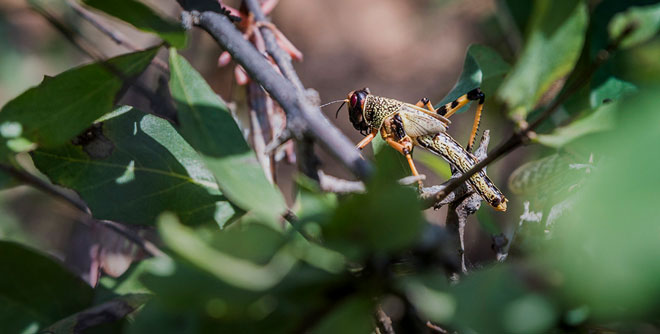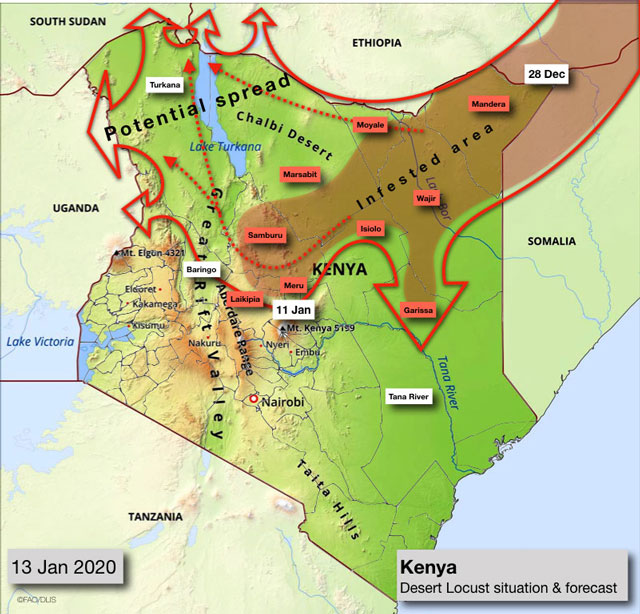
New York, US | THE INDEPENDENT | UN humanitarian chief Mark Lowcock has released US$10 million from the UN’s Central Emergency Response Fund (CERF) to help scale up the response to the devastating desert locust outbreak in East Africa.
The outbreak, which is affecting the Horn of Africa, Southwest Asia and the Red Sea, is the worst of its kind in 25 years for Ethiopia and Somalia – and the worst Kenya has seen for 70 years. The impacts in these countries are particularly acute as pastures and crops are being wiped out in communities that were already facing food shortages.
The desert locust is among the most dangerous migratory pests in the world. A single locust can travel 150km and eat its own weight in food – about two grams – each day. A small swarm can consume the equivalent of food for 35,000 people in one day. They reproduce rapidly and, if left unchecked, their current numbers could grow 500 times by June.
The US$10 million allocation from the UN’s Central Emergency Response Fund will go to the UN’s Food and Agriculture Organization (FAO) and fund an increase in pesticide aerial spraying operations which, given the scale of the current swarms, is the only effective means to reduce the locust numbers.

Under-Secretary-General for Humanitarian Affairs and Emergency Relief Coordinator Mark Lowcock said:
“This devastating locust outbreak is starting to destroy vegetation across East Africa with alarming speed and ferocity. Vulnerable families that were already dealing with food shortages now face the prospect of watching as their crops are destroyed before their eyes.
“We must act now. If left unchecked, this outbreak has the potential to spill over into more countries in East Africa with horrendous consequences. A swift and determined response to contain it is essential. This allocation from the UN Central Emergency Response Fund will fund a massive scale-up in aerial operations to manage the outbreak.”
The outbreak is exacerbating the impacts of climate change already being felt in this region. In Ethiopia, where floods had already affected the harvest, the locust infestation has destroyed hundreds of square kilometers of vegetation in the Amhara and Tigray regions.
In Kenya, which was hit by back-to-back droughts and then floods in 2019, the past week has seen a significant and extremely dangerous increase in swarm activity, and eight counties are now affected.
In Somalia, tens of thousands of hectares of land have been affected in Somaliland, Puntland and Galmudug (Mudug), and mature swarms are present in the Garbahare area, near the Kenyan border. Meanwhile, recent weather in East Africa has created conditions that support rapid locust reproduction.
Today’s allocation comes from the UN’s Central Emergency Response Fund, which provides rapid funding in response to sudden-onset or rapidly deteriorating crises and is designed to grow into a $1 billion-a-year emergency relief mechanism.
Established by the UN General Assembly in 2005 as a global fund ‘for all, by all’, CERF enables timely, effective and life-saving humanitarian action supporting UN agencies and others to kick-start or reinforce emergency response across the world. With generous contributions from 127 Member States and Observers, as well as other donors, the fund has assisted hundreds of millions of people by providing $6 billion since its inception to over 100 countries and territories, including over $2 billion to underfunded crises.
*****
SOURCE: UN CERF MEDIA
 The Independent Uganda: You get the Truth we Pay the Price
The Independent Uganda: You get the Truth we Pay the Price



